People have been enjoying movies and alcohol well before anybody first thought to make popcorn for hungry audiences.
Believe it or not, this carefree pleasure — one most people do not take for granted anymore — has its roots in a small but significant decision that was made almost 110 years ago.
In May of 1912, people were still reeling from the Titanic disaster and sorting through a messy presidential election between four viable presidential candidates (Woodrow Wilson, William Howard Taft, Theodore Roosevelt and Eugene V Debs).
But most people left their worries behind once they stepped off the train at Coney Island, where the amusement parks were just opening their doors that month, making way for the summer crowds with an even wilder array of rides and shows.
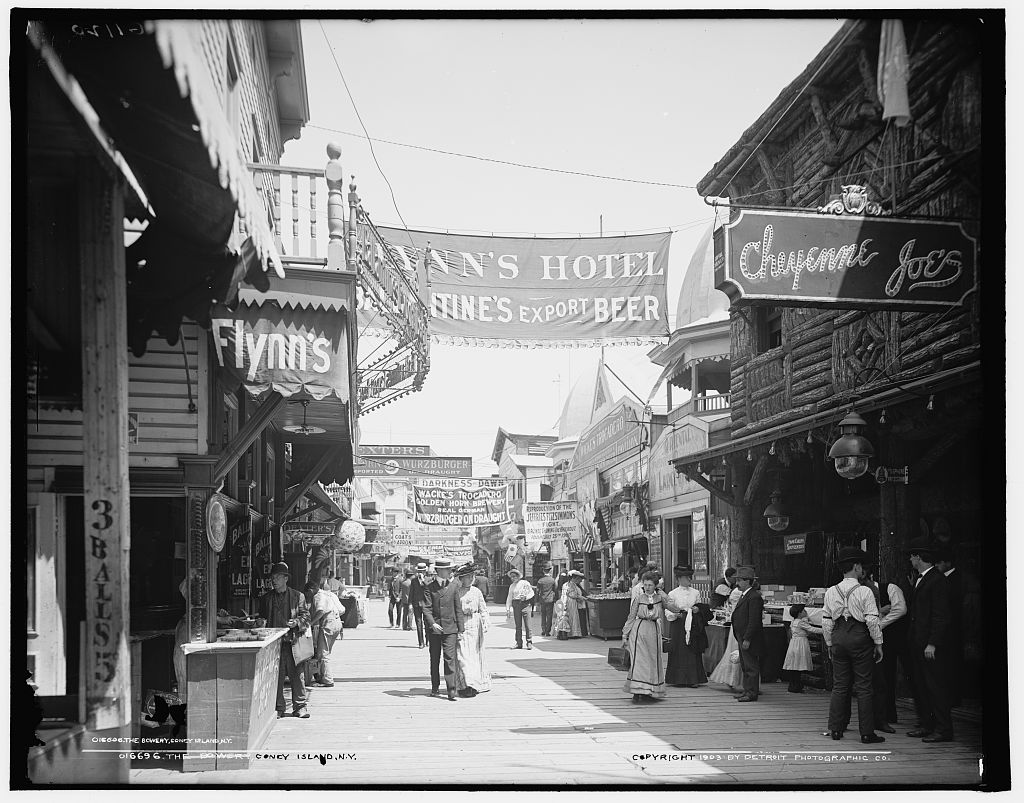
Most of the amusements at Steeplechase Park were totally new, as a fire in 1907 had decimated most of the park.
Nearby sat the ruins of Dreamland, destroyed in a fire in 1911 and never rebuilt. Luna Park also expanded in 1912 with many new rides, including one that seemed to mock the misfortunes of its rival parks — the Great Fire Show, which presented a Western town ravaged in flame.
But a brand new entertainment was making itself known in Coney Island — moving pictures.
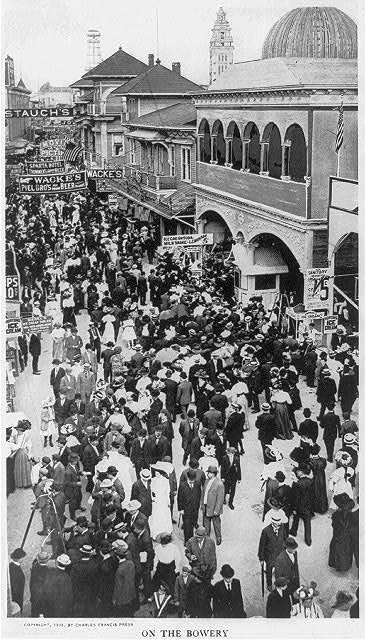
For instance, when Luna Park threw open its doors on May 25, 1912, the park contained a theater which presented some of the world’s first color short films in the British-invented Kinemacolor process. (Here’s an example of one of the films that may have exhibited here.)
The popularity of motion pictures, which were often exhibited between vaudeville acts or in continuous runs in theaters called nickelodeons, soon exposed the fallacy of one particular New York law.
For operators had to have a theater license in order to present a free show, even though, technically, a film could be easily displayed in a non-theatrical environment — namely, a saloon.

Coney Island theater proprietor Herman Wacke, no stranger to the moving image, is touted by some as the first commercial exhibitor of a motion picture at his Trocadero Hotel in 1893.
Wacke’s hotel, a stalwart from Coney’s early years located along a strip of cabarets and beerhalls affectionately called the Bowery, was nearly destroyed in the fire that consumed Steeplechase in 1907.
In 1912, Wacke fanned a few new flames.
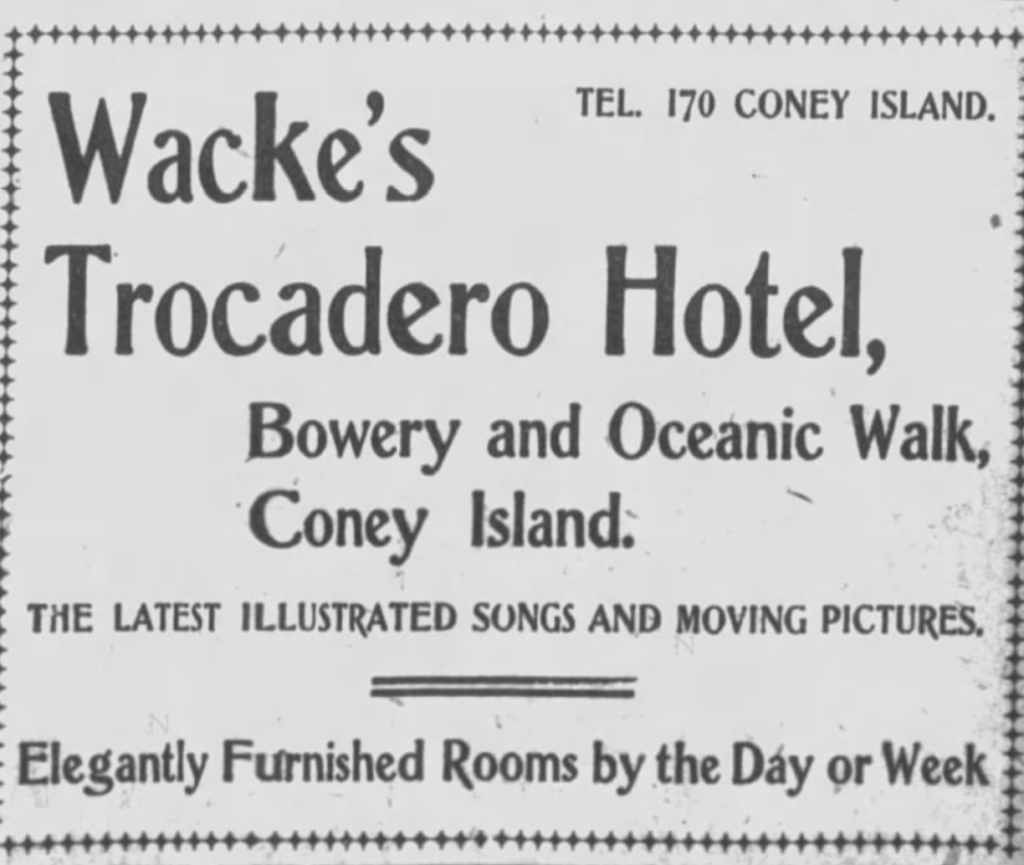
He began showing films for free in the saloon as a way to entice people to come in and purchase food and beer. Wacke’s was probably the best known of many along the Bowery to exhibit films in this fashion.
But the proprietor didn’t have a license to do so, and during one particular sting, Wacke was arrested — “charged with conducting a free show in connection with his bar” — and fined $5.
Not a huge sum of money for a successful saloon owner, and Wacke went willingly, becoming a test case for a law that many certainly thought was rigid and overly meddling.
The charge was eventually overturned by a Kings Country Supreme Court judge who announced that such incidental performances were not subject to the law.
The decision was announced in a headline in the May 28, 1912, edition of the New York Evening World: Free “Movies” Are O.K. It Is No Crime If They Accompany The Beer And Hot Dogs.
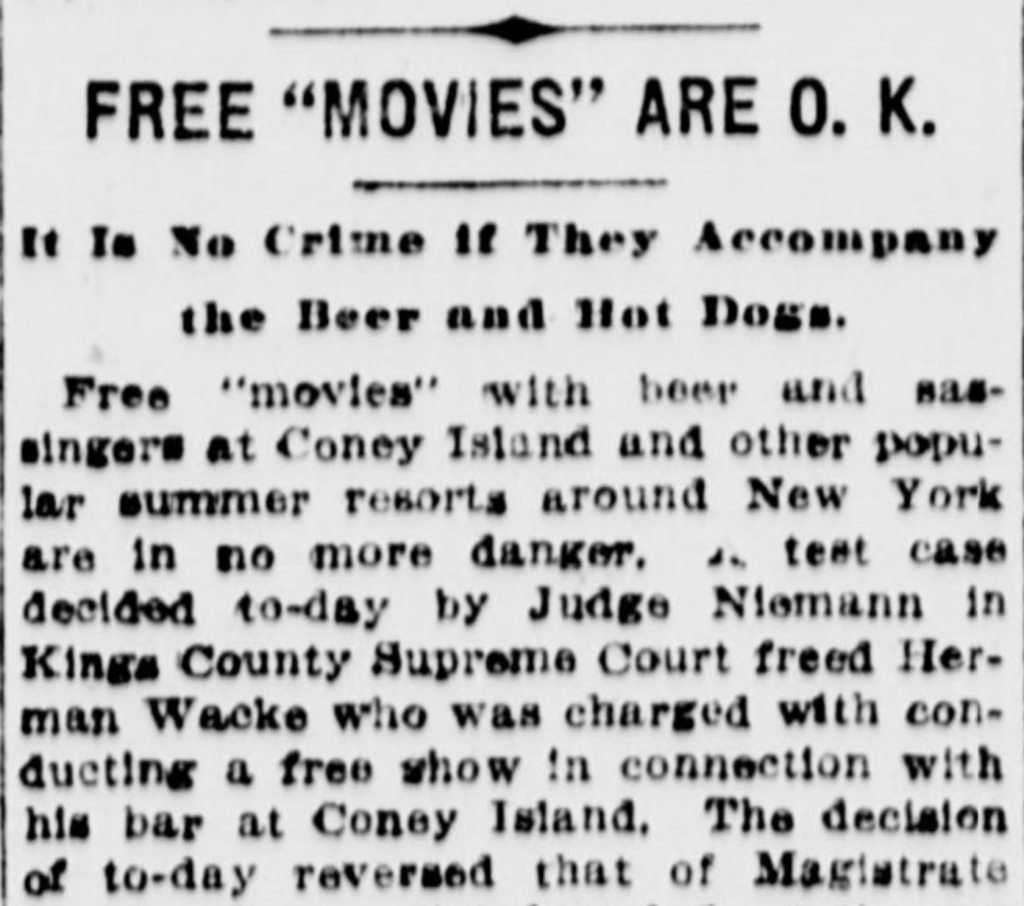
“Wacke was arrested for a test of the law and its relation to the free shows given that people may be induced to buy drinks while sitting at the tables. Judge Niemann held that a show must be conducted as a business of exhibition for a price of admission in order to come under the law. “
The law would be challenged again a few years later by the owners of posh Manhattan cabaret Maxim’s, who also presented so-called ‘free’ performances.
By the 1920s, of course, saloons could technically show movies — but they couldn’t serve alcohol! By the time Prohibition was repealed, films were much longer and people preferred the comfort of lavish movie palaces.
Free movies (and broadcast sports) of course returned to bars with the advent of television.
Today theaters like Alamo Drafthouse and Nitehawk Cinema elegantly mix the pleasure of cinema and fine cocktails. The ghost of Herman Wacke looks down approvingly.
As one of America’s premier leisure destinations, Coney Island was so closely associated with films of this period that it even starred in a few of them, including Mack Sennett’s ‘At Coney Island‘ in 1912.
There’s even an Edison film from 1903 called ‘Rube and Mandy at Coney Island‘.
Of course the best Coney Island-themed silent film is the Buster Keaton/ Fatty Arbuckle comedy from 1917.

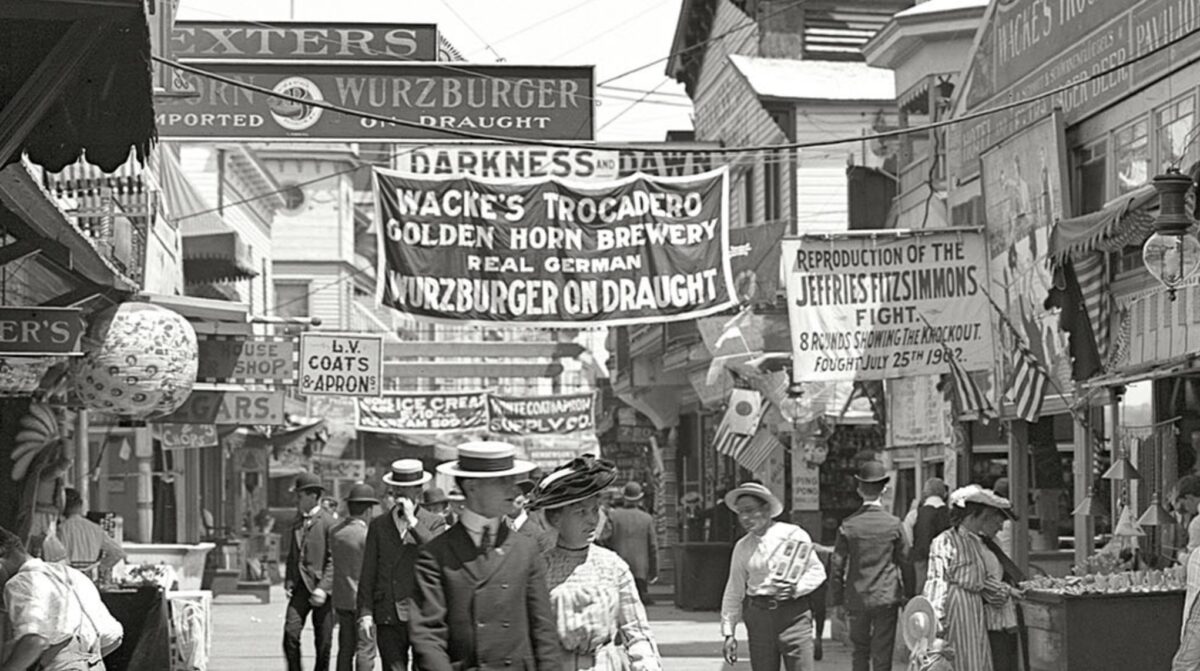
2 replies on “Free movies in Coney Island saloons — since the year 1912!”
Thought you guys might be interested in the return of classic, golden era spook shows to Coney Island this weekend: http://www.facebook.com/phantcreeptheatre
Hello,
I collect movies with submarines or u-boats.
I am for years looking for the short movie DREAMLAND ADVENTURES (1907). Do you have that movie and how can i get it?
Kind regards
Marc Triolet